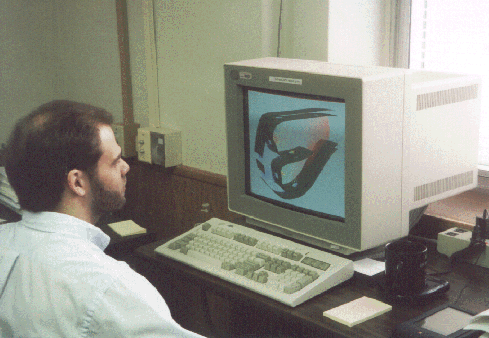 |
|||||
| Home | Research | For Teachers | HISTORY Level 1 Level 2 Level 3 |
PRINCIPLES Level 1 Level 2 Level 3 |
CAREER Level 1 Level 2 Level 3 |
| Gallery | Hot Links | What's New! | |||
| Web Administration and Tools | |||||
 |
|||||
| Home | Research | For Teachers | HISTORY Level 1 Level 2 Level 3 |
PRINCIPLES Level 1 Level 2 Level 3 |
CAREER Level 1 Level 2 Level 3 |
| Gallery | Hot Links | What's New! | |||
| Web Administration and Tools | |||||
![]()
Research on combustors and combustion processes is aimed at advancing the technology for gas turbine engines. The work is applicable to rotorcraft, general aviation/commuter aircraft, and cruise missiles. Attention is focused on providing an improved understanding of combustion, including chemical kinetics of reacting flows, heat-transfer phenomena, flow physics modeling, emissions formation and control, and code development and verification. The advanced computational methods and experiments are pursued in-house, through grants with universities, and through collaborative contracts with industry, often in cooperation with other government agencies.
Special emphasis is being directed at code development, advanced combustor liners, fuel and air mixing, and fuel injection in a size range equivalent to such Army engines as the T700 and T800. Of particular note is the development of the ALLSPD computational fluid dynamics (CFD) code for use in the design and analysis of gas turbine combustors. This new CFD code has a spray model and solves the full Navier-Stokes equations, a k-epsilon turbulence model, and generalized chemistry on a multi-zoned, curvilinear grid with internal obstacles. The name ALLSPD is derived from the vast speed range of the code which has been proved from as high as Mach 5 to as low as Mach 0.0000001. The development is part of the National Combustion Code effort to advance the state of the industry regarding combustion CFD by collaborating with industry.
In the area of advanced combustors, a number of advanced liner concepts have already been transferred to industry. For example, a compliant metal-ceramic liner configuration was developed and demonstrated for uncooled combustors operating at exit temperatures up to 2630°F, which is 300°F above that in current use. Industry is continuing the research, and the results are being factored into the designs of future gas turbine engines. Furthermore, advanced combustor concepts (IHPTET Phase III, RQL, and LPP) demand higher temperature liner materials. RQL (Rich Burn - Quick Quench - Lean Burn) combustor liners cannot be film cooled and will therefore rely only on backside convection cooling for liner thermal management. LPP (Lean Burn - Premixed - Prevaporized) combustor liners and IHPTET Phase III combustor liners have less cooling air available since more air is demanded for combustion. Advanced CMC (Ceramic Matrix Composite) materials are being developed, tested, and evaluated by the Army-NASA team.
In the area of assessment of atmospheric impact by high density aircraft flight, research is being conducted to characterize current and proposed advanced engine combustor emission constituents. Activities include development of advanced non-intrusive and extractive measurement systems, fully integrated flow and chemistry computational coded, and altitude chamber engine tests.
POC: Dr. Chowen Wey

ALLSPD Code Demonstration
![]()
Send all comments to ![]() aeromaster@eng.fiu.edu
aeromaster@eng.fiu.edu
© 1995-98 ALLSTAR Network. All rights reserved worldwide.
Updated: February 17, 1999